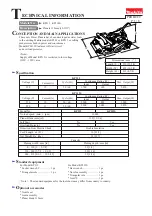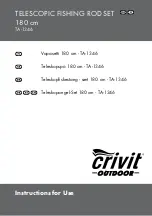
BAS-SVX40B-EN
9
Location Considerations
To provide the best signal strength between associated wireless devices and to reduce the number
of WCIs needed for an application, mount WCIs in direct, unobstructed, line-of-sight paths. Locate
WCIs so that the number of metal and concrete barriers between pairs of devices is minimal. In
general, sheetrock walls and ceiling tiles are not of concern.
For more detailed information about WCI placement, see the
Wireless Comm Network Design Best
Practices Guide
(BAS-SVX55).
The WCI produces very low levels of electromagnetic (RF) energy. To avoid exposure, keep the WCI a minimum of 8
in. (20 cm) from your body.
Maximum Wire Length
The maximum wire length between the WCI and its power source is 656 ft (200 m).
Note:
The connector that comes with the WCI is one meter in length.
Installation Locations
Unit controller
For a unit controller installation, the most typical WCI mounting location is on the sheet metal
enclosure of the unit controller or HVAC equipment housing.
Coordinator Location
For optimum network performance and reliability, the coordinator WCI should be centrally located
within the network. See the
Wireless Comm Network Design Best Practices Guide
(BAS-SVX55) for
more detail.
Repeaters overcome out-of-radio-range issues
A WCI can be installed to function as a repeater to bridge the signal between a WCI that is out of
the radio range of the other WCIs (see
“Repeater Applications,” p. 17
). When choosing a location
for a repeater WCI, consider the availability of a 24 Vac/Vdc power source to meet its power
requirement.
Note:
A repeater extends comm link radio communications only. It cannot be used to extend
wireless zone sensor communications.
Coordinator and repeater placement recommendations on sites without VAV
boxes
The recommended mounting location for RTU installations is in the return plenum, above the roof
penetration. This location provides the best overall sensor and communication link quality, and
makes access to the WCI easier than below the roof deck for improved serviceability.
In RTU/VAV systems, there is adequate network density minimizing the need for repeaters.
However, the increased distance between devices on single zone rooftops means that repeaters
will be required in many of these installations. Unlike VAV boxes, which may be within line of site,
RTUs have greater obstructions between devices, such as steel roof decks and return ducts.
CAUTION
Avoid exposure to electromagnetic energy!
The WCI produces very low levels of electromagnetic energy. To avoid exposure, keep the WCI
a minimum of 8 in. (20 cm) from your body.
Risque d’exposition à l’énergie électromagnétique!
L’interface de communication (WCI) sans fil produit de l'énergie électromagnétique de très bas
niveau. Afin d'empêcher toute exposition, maintenez-la à au moins 20 cm (8 pouces) de votre
corps.










































